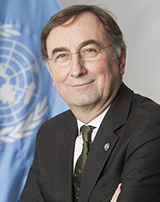Dear Mr Zakaria: for solar geoengineering, governance matters

On the 22nd of November, Fareed Zakaria posted a timely interview with Harvard Professor David Keith on the potential of stratospheric aerosol injection (SAI) to help tackle climate change. While much of what one hears during the programme is true, it requires a response, mainly because of what is not addressed.
Zakaria ends by saying: “…It [SAI] sounds too good to be true, but that is how sometimes technology works. So why not try?” The short answer is that we are not ready.
Before we can answer his question, a lot has to happen. Much more research certainly needs to take place. And just as importantly, we need to address how to govern such technology.
First, we must stress that SAI is not a “solution” to the climate change problem, as it only directly addresses one of its symptoms: increased global temperature. It is at best a temporary complement to the much more ambitious mitigation and carbon removal that the world needs to undertake to avoid global warming of more than 1.5-2°C.
We must also recognize that SAI is inherently global, in that it would alter the whole atmosphere. It will impact every ecosystem, every person, every economy – for the better or the worse. That means all countries need to be engaged in the decision-making process over whether to use it, and if so, how.
This would require a level of global cooperation the world has not yet seen. And our track record in addressing global challenges – in spite of some successes – is not fantastic.
Some believe that even talking about SAI leads to the ‘moral hazard’ of putting less emphasis on the real solutions to climate change: the reduction of emissions and the removal of carbon from the atmosphere. This may be true, and the world must remain vigilant that this does not happen. However, not talking about it could become an even larger ‘moral hazard’.
Some believe that given the imperfect world we live in, SAI would be ungovernable. Others believe that it could be governed, but that the challenge is huge. And some believe it is human hubris to imagine we can intentionally engineer the climate to outcomes we want.
Even the governance of research is challenging – due to the perceived ‘slippery slope’ argument that such research will inevitably lead to more research and then implementation.
And even if the technology were to look viable, who should take the decision to consider SAI, and when? Should the world wait until we reach 1.5°C warming? Or should it wait until the world is 3-4 °C degrees warmer, and ecological and geopolitical chaos forces us to decide? Where should that debate take place? The only universal global forum the world has today is the United Nations General Assembly. But we know that discussions and decisions can take a long time there.
If the world were to decide to proceed with SAI, what kind of institution(s) would need to be in place to continue delivering it for decades to come – possibly hundreds of years, if we are not successful in sufficiently reducing global greenhouse gas concentrations? Such an institution would need to have assured funding, yet be isolated from economic, financial and geopolitical crises.
Any governance framework would also have to allow for ethical and justice considerations, as the impact of solar geoengineering could be different in different parts of the world, and would also impact future generations. If some people are negatively affected, the governance framework needs to be able to compensate them.
And – possibly the greatest danger – what happens if one country, a small group of countries, or even possibly by a wealthy individual, decides to go ahead with the ungoverned, unilateral deployment of SAI? The environmental and geopolitical implications could be substantial.
That is why our C2G2 Initiative is working toward a global agreement that there be no deployment of SAI before the risks and potential benefits are sufficiently known, and the necessary governance frameworks are decided upon. Clearly that cannot happen without well-regulated research, that responds to global public policy input.
Maybe the potential benefits will be as Keith suggests, and maybe the risks will be acceptable – especially compared to the risks of a high climate-change-world. But comparing those risks and accepting (or rejecting) them requires a much wider societal debate, at local, national and global levels.
The time to begin that debate is not in 50 years, when it will be too late, but now.
Going back to Zakaria’s final words: should we try it? Let’s first have that debate, based on the best available science, with clarity about necessary governance frameworks. Then perhaps the world will be able to answer him.
Thank you, Janos, for this clear and concise summary of the global governance dilemmas facing us with this technology. Far better to have a robust, global conversation about the alternatives for climate geo-engineering governance now than deal with the fallout from unilateral action later.